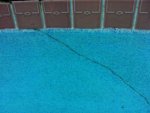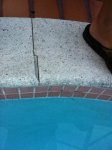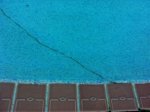In April, I posted about a couple of issues that I had while getting the pool going for the swimming season. One was CYA loss over the winter, and one was black algae. I solved the black algae issues but it is now clear that the source of CYA loss is a leak.
I pretended it wasn't happening all summer but now it's too much to ignore. I have read the part on leaks in the Pool School and will report back once I have done the tests described there to diagnose where in my system in appears to be happening. My question now is how to plug/stop up the various entries and exits and entries to the pool 'vessel'.
I have a skimmer in which the bowl is formed into the concrete that forms the pool, if that matters. Should I stick a tennis ball down the pipe?
What about main drain? Remove cover and stuff something in there?
And I have two jet returns. I have never touched these in any way since I bought the house. Is there an outer portion I can remove to plug? With what?
Or do drains/skimmers/jets have special plugs that I should buy at a pool store to properly seal them for a leakage test?
I pretended it wasn't happening all summer but now it's too much to ignore. I have read the part on leaks in the Pool School and will report back once I have done the tests described there to diagnose where in my system in appears to be happening. My question now is how to plug/stop up the various entries and exits and entries to the pool 'vessel'.
I have a skimmer in which the bowl is formed into the concrete that forms the pool, if that matters. Should I stick a tennis ball down the pipe?
What about main drain? Remove cover and stuff something in there?
And I have two jet returns. I have never touched these in any way since I bought the house. Is there an outer portion I can remove to plug? With what?
Or do drains/skimmers/jets have special plugs that I should buy at a pool store to properly seal them for a leakage test?






